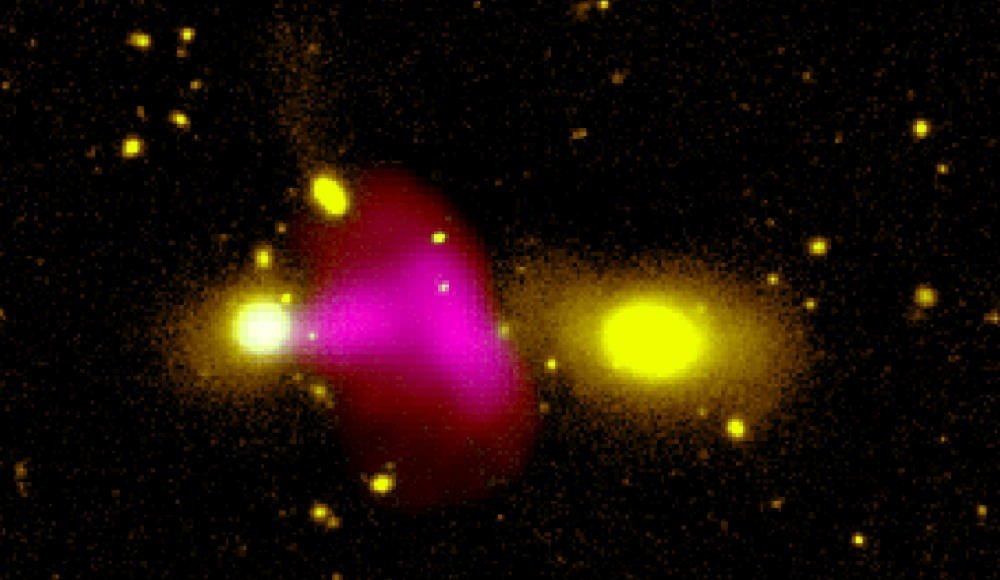Bizarre black hole is blasting a jet of plasma right at a neighboring galaxy

A black hole at the heart of a distant galaxy is blasting a neighboring galaxy with a jet of plasma moving at near light speed.
The unique black hole is located in the galaxy RAD12, and its plasma stream is bombarding the neighboring galaxy RAD12-B. Located around 1 billion light-years from Earth, the two galaxies are in the midst of a collision and merger.
The finding represents the first time a jet has been seen emerging from the center of one galaxy and striking another large galaxy.
Related: Black hole caught spewing jets into space at nearly the speed of light (video)
Astrophysical jets are composed of ionized gas and electrons and are usually seen in pairs moving in opposite directions at relativistic speeds close to the speed of light. What makes the situation in RAD12 unique is that its black hole seems to be ejecting only one jet, which is directed toward RAD12-B. Why this jet is solo is currently a mystery.
The unique system could have implications for how star formation is quenched in galaxies, as astrophysical jets have been known to drive out cold gas that forms the building blocks for star birth, the research team wrote in a new study. "We are excited to have spotted a rare system that helps us understand radio jet feedback of supermassive black holes on star formation of galaxies during mergers," study leader Ananda Hota, an assistant professor in the University of Mumbai Department of Atomic Energy in India, said in a statement.
The strange lopsided nature of RAD12's jet was first observed in 2013 and was found in both optical data from the Sloan Digital Sky Survey and radio data from the Very Large Array FIRST Survey. The galaxy's strange behavior was then confirmed by follow-up observations conducted by Hota and colleagues using the Giant Metrewave Radio Telescope (GMRT) in India and the MeerKAT radio telescope, which comprises 64 antennas in South Africa's Meerkat National Park.
Breaking space news, the latest updates on rocket launches, skywatching events and more!
While a conical stream of fresh, young plasma can be seen as it is ejected from the heart of RAD12 and out past the galaxy's visible stars, observations collected using the GMRT showed fainter and older plasma extending beyond this stream.
The older plasma blooms like the cap of a mushroom and completes the jet structure, which stretches more than 440,000 light-years — longer than its host galaxy and far enough to strike the neighboring galaxy RAD12-B.
"Observations with the GMRT and data from various other telescopes, such as the MeerKAT radio telescope, strongly suggest that the radio jet in RAD12 is colliding with the companion galaxy," Hota said.
The public also played a big role in studying RAD12, Hota noted. RAD@home, the first Indian citizen science research platform, includes contributions from thousands of citizen scientists and students.
The team's work was published Oct. 12 in the journal Monthly Notices of the Royal Astronomical Society: Letters.
Follow us on Twitter @Spacedotcom or on Facebook.

Robert Lea is a science journalist in the U.K. whose articles have been published in Physics World, New Scientist, Astronomy Magazine, All About Space, Newsweek and ZME Science. He also writes about science communication for Elsevier and the European Journal of Physics. Rob holds a bachelor of science degree in physics and astronomy from the U.K.’s Open University. Follow him on Twitter @sciencef1rst.
